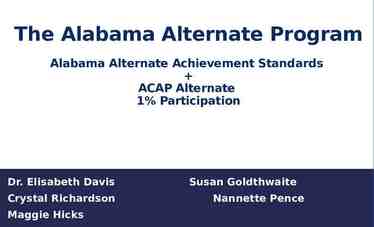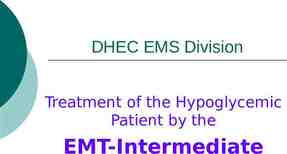Texas Public School Finance Overview 2022–2023 Biennium TEXAS
62 Slides1.78 MB
Texas Public School Finance Overview 2022–2023 Biennium TEXAS EDUCATION AGENCY APRIL 2022
Agenda Foundation School Program Tax Compression under HB 3 Tier One and Tier Two Entitlements Local Revenue Level in Excess of Entitlement Charter School Funding Facilities Funding Appendix 2
Foundation School Program TEXAS PUBLIC SCHOOL FINANCE OVERVIEW 3
Foundation School Program (FSP) The FSP establishes how much state funding school districts and charter schools are entitled to receive. Formulas are set in statute (Chapters 46 and 48), and they consider both student and district characteristics including the number and type of students enrolled, district size and geographic factors, and local taxable property values and tax rates. Generally, once entitlements are established, the formulas are used to determine how much a district can generate locally (local share) through property taxes before making up the difference with state funds (state share). 4
FSP Appropriation (State Aid Only) breakdown for the 2022–2023 Biennium (in millions) Item Foundation School Fund (Fund 193) Recapture Property Tax Relief Fund and School District Ad Valorem Tax Relief Fund ( 5,325.5 50) Available School Fund Amount Notes 30,465.7 5,651.8 5,375.5 The Foundation School Fund is an account within the General Revenue Fund used exclusively for the purpose of funding public education, largely funded by sales taxes, and occupation taxes and revenue. Appropriated Receipts is authorized by Chapter 48 of the Texas Education Code. PTRF is primarily funded through the franchise tax but also includes vehicle and tobacco sales taxes. The school district AVTRF is funded from the state General Revenue Fund. 5,117.8 Primarily, funded from returns on the Permanent School Fund, 25% of state’s motor fuels tax revenue, and transfers from the General Land Office (GLO). Lottery Proceeds 3,235.2 Approximately 60% of net lottery proceeds from the sale of Texas Lottery games is transferred to the FSP. TREE Fund 1,796.2 HB 3 established a new fund in the state treasury dedicated for the purpose of reducing school district (M&O) tax rates, and to pay the cost of tier one allotments. Total Appropriated State FSP 51,642.3 The FSP is a sum-certain appropriation, and the mix of component revenue streams may fluctuate. 5
A balancing act: State Share vs. Local Share State Share Decreas es As Local Share Increases. 6
Annual State & Local Statewide FSP Entitlement for FY2022 5.12 million students in average daily attendance and that number is projected to continue to grow each year. 50.29 billion (state & local) for FSP M&O M&O maintenance & operations - salaries, utilities, etc. 8.49 billion (state & local) for FSP I&S I&S interest & sinking - debt service payments on voter approved bonds TEA Summary of Finances October 2021 7
Maintenance and Operations Tiers TIER ONE TIER TWO Refers to the district’s foundation entitlement. Refers to the district’s “enrichment” entitlement. The calculation is based upon: The calculation is based upon: District characteristics. Student characteristics. Number of students in average daily attendance (ADA). Basic allotment per student in ADA, which is set in the General Appropriations Act ( 6,160 in FY2020 and FY2021). School district tax rate (varies, but State MCR is 0.9134 per 100 of local school district property value). Number of students in weighted average daily attendance (WADA). Number of pennies of tax effort above MCR. Guaranteed amounts for pennies of tax effort are set in statute and/or General Appropriations Act called the Guaranteed Yield Per Penny. School district tax rate (based on local decision to have optional tax rate between MCR and 8 *Not all school districts can levy up to 1.0834, only school districts with an MCR of 0.9134 can go up to 1.0834 1.0834* per 100 of local school district
HB 3 infused 4.4 billion of net new revenue (year over year) into district budgets PRE HB3 FY2019 POST HB3 FY2020 4.0B Increase in State Funds 4.4B increase in total funding for public education operations in fiscal year 2020 over fiscal year 2019, resulting in a year over year gain of 872 per ADA. 17.8 B 2.7B 21.7 B 2.4B Reduction in Recapture 0.3B 24.6 B 25.3 B 530 per ADA vs Prior Law The numbers on this slide are inclusive of the ADA hold harmless adjustments provided due to Covid19. State Funds (Net of Recapture) Recapture Payments Local Funds (Property Taxes Net of Recapture) Increase in Local Funds 0.8B 9
Tax Compression under HB 3 TEXAS PUBLIC SCHOOL FINANCE OVERVIEW 10
Refresher: M&O Taxes before HB 3 under Prior Law Tier One Tier Two (Max 0.17) 1.00 . 0.97 0.98 0.99 1.17 1.04 1.06 6 Golden Pennies First 4 Golden Pennies set by board action 11 Copper Pennies Utilizing the next 13 pennies required voter approval via a Tax Ratification Election (TRE) 11
HB 3 Year One: Max M&O Tax Rates Dropped From 1.17 to 1.0683 1. Tier One max rate reduced by 7% 2. First two Copper Pennies become Golden Pennies 3. Remaining Copper Pennies are cut in half 4. Rates in most cases cannot be raised for Tier Two (Max year 1 0.17) HB 3 Year One (FY2020) Tier One 0.93 0.91 0.92 . 0.90 1.0683 1.01 8 Golden Pennies 3.2 cents of future taxing capacity 9 Copper Pennies 12
HB 3 Year Two: Max M&O Tax Rates Dropped to 1.0864 (17 cents above state compression of 0.9164) Unintended Consequenc e HB 3 Year Two (FY2021) Tier One 0.8247 0.9164 . . 0.90 0.91 0.92 10% Equity Band 1. 2. 3. 4. 5. Tier One State Compression moved from 0.93 to 0.9164 Tier One minimum MCR established at 0.8247 Each district now has their own maximum total rate. All districts would need a Voter Approval Tax Rate Election (VATRE) in order to exceed [MCR 0.1383]. *Tier One MCR of 0.9164 0.1383 1.0547, which is the new state maximum M&O tax rate w/out VATRE). Tier Two (Max 0.17) 0.9964 8 Golden Pennies 1.0547* State max rate w/o VATRE 1.0864 9 Copper Pennies 13
HB 3 Year Three: Max M&O Tax Rates Dropped to 1.0834 (17 cents above state compression of 0.9134) Unintended Consequenc e HB 3 Year Three (FY2022) Tier One 0.8220 0.9134 . . 0.90 0.91 0.92 10% Equity Band 1. 2. 3. 4. 5. Tier One State Compression moved from 0.9164 to 0.9134 Tier One minimum MCR moved from 0.8247 to 0.822 Each district now has their own maximum total rate. All districts would need a Voter Approval Tax Rate Election (VATRE) in order to exceed [MCR 0.1383]. *Tier One MCR of 0.9134 0.1383 1.0517, which is the new state maximum M&O tax rate w/out VATRE). Tier Two (Max 0.17) 0.9934 8 Golden Pennies 1.0517* State max rate w/o VATRE 1.0834 9 Copper Pennies 14
State Average Rate Compression Under HB 3 Tier One Tax Rates 1.0000 0.9500 0.9000 0.8500 0.8000 0.7500 0.7000 Tax Year 2018 Tax Year 2019 Tax Year 2020 Tax Year 2021 Tax Year 2022 (Proj.) Tax Year 2022 tax rates computed as follows (Tier One Tax Rates Current Law and GAA growth assumptions of 4.36%);
Tax Rates and Tax Collection History Total M&O Tax Collections State Avg M&O Tax Rate HB 3 (86-R) 29,554,340,100.0 30,000,000,000.0 28,728,747,113.0 1.5000 27,786,618,378.0 27,323,050,802.0 Statewide Total M&O Taxes (In Billions) HB 1 (793) 25,012,642,090.0 23,247,241,004.0 22,048,124,758.0 21,136,183,277.0 19,500,947,161.0 20,000,000,000.0 18,283,373,591.0 18,006,817,778.0 17,643,038,624.0 17,383,663,494.0 17,262,048,570.0 17,138,057,824.0 17,064,554,854.0 15,423,604,769.0 15,000,000,000.0 1.0000 10,000,000,000.0 0.5000 25,000,000,000.0 5,000,000,000.0 0.0 2005 2006 2007 2008 2009 2010 2011 2012 2013 2014 2015 2016 2017 2018 2019 2020 2021 - Tax Year 16
The M&O tax rate is then allocated into three portions of the FSP formulas. Tier One Compresse d M&O Tax Rate ( 0.9134) Excess Local Revenue Above Entitlement Tier Two Tier Two LEVEL 1 LEVEL 2 Eight Golden Pennies* ( 0.9134 0.9934) No Excess Local Revenue Nine Copper Pennies* ( 0.9934 1.0834) Excess Local Revenue Above Entitlement LEVEL 2 LEVELtax1rate where the golden and copper pennies begin will vary by district because each district can *The specific 17
Tier One Entitlement TEXAS PUBLIC SCHOOL FINANCE OVERVIEW 18
How is Tier One funding determined? The Basic Allotment (BA) is 6,160 per student for the 2022–2023 biennium and is set in Chapter 48 of the Texas Education Code, and it can be increased through the General Appropriations Act (GAA). The BA is then used in a series of formulas that apply specific weights and adjustments based on student and district characteristics. These formulas are known as Tier One. 19
HB 3 increased the basic allotment by 20% in FY2020. HB 3 6,160 6,160 5,140 5,140 4,950 4,765 4,765 HB 3646 2,537 3,135 HB 1 6 07 08 09 10 11 12 13 14 15 16 17 18 19 20 21 22 23 0 0 20 20 20 20 20 20 20 20 20 20 20 20 20 20 20 20 20 2 F Y F Y F Y F Y F Y FY F Y F Y F Y FY F Y F Y F Y F Y F Y F Y F Y F Y 20
The regular program allotment is nearly twice as large as the other tier one allotments combined. Regular Program 63% Compensatory Education Special Education Career & Technology Small & Mid-sized District Allotment Early Education Allotment Bilingual / Dual Language Transportation Fast Growth Allotment CCMR Outcomes Bonus TEA Summary of Finances October 2021 21
Tier One – Subchapters B & C SUBCHAPTERS B & C (IN WADA FOR TIER TWO PURPOSES) Basic Allotment - 6,160 per student in average daily attendance. Small & Mid-Sized District Allotment Special Education – various weights (HB 3 increased Mainstream from 1.10 to 1.15) Allotment for Dyslexia (or related disorder) – 0.10 weight Compensatory Education Allotment – 0.225 – 0.275 spectrum of weights Bilingual Education Allotment (includes Dual Language) – 0.10 / 0.15 / 0.05 weights School Safety Allotment - 9.72 per student in average daily attendance 22
Tier One – Subchapters B & C SUBCHAPTERS B & C (IN WADA FOR TIER TWO PURPOSES) Career & Technology Education Allotment – 1.1, 1.28, 1.47 weights, & 50 p-tech/new tech Public Education Grant Allotment – 0.10 weight Early Education Allotment – 0.10 weight College, Career, or Military Readiness (CCMR) Outcomes Bonus - 5,000 / 3,000 / 2,000 for educationally disadvantaged / non-educationally disadvantaged / SPED Fast Growth Allotment – 0.15, 0.30, 0.45 weights (excluding charters) Teacher Incentive Allotment - 12,000 / 6,000 / 3,000 ranging to 32,000 / 18,000 / 9,000 for master teachers / exemplary teachers / recognized teachers, respectively Mentor Program Allotment – 1,800 for each beginning teacher with a qualified mentor teacher 23
Tier One – Subchapter D SUBCHAPTER D (NOT IN WADA FOR TIER TWO PURPOSES) Transportation Allotment - 1.00 per regular mile for eligible students New Instructional Facility Allotment - 1,000 per ADA up to 100 million statewide annually Dropout Recovery & Residential Placement Facility Allotment - 275 per ADA Tuition Allotment – amount varies, limited by commissioner rule College Preparation Assessment Reimbursement Certification Examination Reimbursement 24
Small & mid-sized district allotment The small and mid-sized district allotment provide for additional funding for some school districts. The small district allotment (SDA) applies to districts with fewer than 1,600 students and provides the formula that results in the highest level of funding: Districts with fewer than 1,600 students ((1,600 – ADA) 0.0004) Basic Allotment Single county districts with fewer than 300 students ((1,600 – ADA) 0.00047) Basic Allotment The mid-size district allotment (MDA) applies to districts with less than 5,000 students. MDA ((5,000 – ADA) 0.000025) Basic Allotment 25
The per-student funding generated by the SDA and MDA formulas decreases as average daily attendance increases 5,000 4,500 4,000 3,500 3,000 2,500 2,000 1,500 1,000 500 - 9 259 509 759 1,009 1,259 1,509 1,759 2,009 2,259 2,509 2,759 3,009 3,259 3,509 3,759 4,009 4,259 4,509 4,759 Single-County Districts fewer than 300 students Districts with fewer than 5,000 students TEA School Finance Model July 2021 Districts with fewer than 1,600 students 26
Small & mid-sized district adjustment as used for SPED and CTE allotments The (incremental) small and mid-sized district allotment per ADA that is used to calculate the district’s small/mid-sized stand-alone allotment is added to the amount of the district’s basic allotment for use in calculating the total special education and career and technology allotments. Although all charter schools (regardless of enrollment) receive an adjusted average of the small and mid-sized district allotment per ADA, their special education allotment is funded using the basic allotment. However, HB1525 modified their career and technology allotments to use the state average adjusted allotment. 27
Career & Technology Changes Career & Technical Education (CTE) funding from one weight of 1.35 per Full Time Equivalent (FTE) to a system of tiered weights related to courses. Entitles a district, for each FTE student in average daily attendance in an approved CTE program in grades 7 through 12, to an annual allotment equal to the basic allotment, or, if applicable, the sum of the basic allotment and the allotment under Section 48.101 (Small and Mid-Sized District Allotment) to which the district is entitled, multiplied by: 1.1 - for a FTE student in CTE courses not in an approved program of study; 1.28 - for a FTE student in levels one and two CTE courses in an approved program of study, as identified by TEA; and 1.47 - for a FTE student in levels three and four CTE courses in an approved program of study, as identified by TEA.
Fast Growth Allotment Changes o Creates 3 tiers (0.48, 0.33, 0.18 - 40%,30%,30%) o Based on total enrollment growth over 6 years greater than 250 (excludes VSN) o Transition 40M Hold Harmless o Funded on incremental growth above 250 instead of total enrollment. o Caps spending on this allotment at 270 million for 2021-22 school year; 310 million for the 2022-23 school year; and 315 million for the 2023-24 school year
Tier One: Calculation of State Share and Excess Local Revenue CHAPTER 48 DISTRICT RECEIVING STATE AID CHAPTER 48 DISTRICT WITH LOCAL REVENUE IN EXCESS OF ENTITLEMENT Tier One Total Cost 12,000,00 0 Tier One Total Cost 12,000,000 Current Tax Year District Property Value 700,000,0 00 Current Tax Year District Property Value 1,400,000,0 00 6,393,800 Local Share at 0.9134 MCR 12,787,600 5,606,200 Excess Local Revenue ( 787,600) Local Share at 0.9134 MCR State Share of Tier One 30
Tier one makes up the vast majority (76%) of the Foundation School Program (FY21). Tier Two Formula B 5.5 B .4 Transition Facilitie 8.6 B s 45.8 B Tier One TEA Summary of Finances July 2021 31
Tier Two Entitlement TEXAS PUBLIC SCHOOL FINANCE OVERVIEW 32
Tier Two Overview A district’s Tier Two allotment provides for enrichment funding which is intended to supplement the basic funding provided by Tier One funds. To receive Tier One funding, school districts must tax at their individual maximum compressed tax rate (MCR) per each 100 of local district property value. However, districts have local discretion to set a tax rate that is 0.17 above their individual MCR. Tier Two focuses on taxpayer equity by ensuring that school districts receive a guaranteed amount of funding for each penny of tax effort up to 0.17 above their MCR for each student in their weighted average daily attendance (WADA). This guaranteed amount per WADA is called the guaranteed yield. 33
HB 3 linked the tier two guaranteed yields to the basic allotment beginning in FY2020. 99.41 98.56 98.56 74.28 59.97 59.02 golden pennies 46.94 copper pennies 31.95 59.97 49.28 49.28 FY FY 31.95 FY FY 31.95 FY FY 31.95 FY FY 31.95 FY FY 31.95 FY The number of golden pennies have expanded over time from four to eight. FY FY FY FY FY FY 34
The difference between ADA and WADA AVERAGE DAILY ATTENDANCE (ADA) WEIGHTED AVERAGE DAILY ATTENDANCE (WADA) The number of actual students in attendance on the average school day. Calculated using Tier One allotments (Subchapters B & C) (not the number of actual students in attendance). There are 5.1 million ADA in Texas but there are 7.2 million WADA. There will always be less ADA than WADA. Used to calculate Tier One allotments. Districts with large populations of students with special characteristics (i.e. compensatory education students) will have more WADA than similar districts with small populations. Used to calculate Tier Two allotments. 35
Tier Two: How are the number of weighted students (WADA) in a district calculated? Tier One Entitlement – Subchapters B & C Weighted Average Daily Attendan ce (WADA) Basic Allotme nt ( 6,160) 36
Revenue generated by a penny of tax effort can vary greatly between districts Local M&O Tax Collections Revenue per WADA per Penny 140 120 100 80 60 120.00 40 20 25.00 - Disparities in local taxable property values directly affect how much a penny of M&O tax effort can generate at the local level. Tier Two introduces the concept of the GUARANTEED YIELD (GY) formula on a “PER PENNY PER WADA” basis to help close the gap. 37
Districts are equalized up to 160% of the Basic Allotment for the golden pennies Revenue per WADA per Penny 140 Local M&O Tax Collections Tier Two Guaranteed Yield Per Penny Tier Two State Aid 120 100 98.56 No Excess Local Revenue 98.56 80 60 73.56 120.00 40 20 25.00 - Golden Pennies equalized up to 98.56 per penny of tax effort per WADA. No excess local revenue from districts that have revenue greater than 160% of the Basic Allotment. 38
Districts are equalized up to 80% of the Basic Allotment for the copper pennies Revenue per WADA per Penny 140 Local M&O Tax Collections Tier Two Guaranteed Yield Per Penny Tier Two State Aid 120 100 Excess Local Revenue above 49.28 80 60 40 49.28 120.00 49.28 24.28 20 25.00 - Copper Pennies equalized up to 49.28 per penny of tax effort per WADA. No excess local revenue from districts that have revenue greater than 80% of the Basic Allotment. 39
Tier Two example of a district with an M&O tax rate of 1.09 and a local yield of 75 TIER TWO, LEVEL 1 (GOLDEN PENNIES) TIER TWO, LEVEL 1 (GOLDEN PENNIES) TIER TWO, LEVEL 2 (COPPER PENNIES) TIER TWO, LEVEL 2 (COPPER PENNIES) WADA 1,000 WADA 1,000 Number of Golden Pennies 8 Number of Copper Pennies 8 Guaranteed Yield 98.56 Guaranteed Yield 49.28 Tier Two, Level 1 Entitlement 788,480 Tier Two, Level 2 Entitlement 394,240 (Line 1 x Line 2 x Line 3) Local Share (Line 1 x Line 2 x Line 3) 600,000 (Line 1 x Line 2 x 75) Tier Two, Level 1 State Share (Line 4 – Line 5, floor of Local Share 600,000 (Line 1 x Line 2 x 75) 188,480 Tier Two, Level 2 State Share (Line 4 – Line 5, floor of ( 205,760) Excess 40
Local Revenue Levels in Excess of Entitlement TEXAS PUBLIC SCHOOL FINANCE OVERVIEW 41
What are local revenue levels in excess of entitlement? Chapter 48 of the Texas Education Code (TEC) 48.257 ensures that no district retains local revenues that exceed their Tier One entitlement. In addition, TEC 48.257 ensure that no district retains local revenues that exceed their Tier Two copper penny entitlement under TEC 48.202(a-1)(2). Districts subject to this provision must choose a method to reduce their local revenue level below their entitlement level. 42
Excess Local Revenue Levels for each Tier Tier One Basic Allotment of 6,160 Excess Local Revenue Above Entitlement LEVEL 1 Tier Two Tier Two LEVEL 1 LEVEL 2 Eight Golden Pennies at 160% of the Basic Allotment No Excess Local Revenue Nine Copper Pennies At 80% of the Basic Allotment Excess Local Revenue Above Entitlement LEVEL 2 43
How does a district reduce excess local revenue levels? A district has five options available to reduce excess revenue levels: Consolidation by agreement [with another district] (TEC, §49.051) Detachment and annexation by agreement (TEC, §49.101) Purchase of attendance credit (TEC, §49.151) This is 100% of current agreements. Education of nonresident students [from a partner district] (TEC, §49.201) Tax base consolidation [with another district] (TEC, §49.251) If a district fails or refuses to exercise Option 1, 3, 4 or 5, the commissioner is required to achieve revenue level reduction through detachment and annexation or consolidation (Option 2). 44
How does the state use excess local revenues? The most commonly chosen method of reducing excess local revenue levels is Option 3 (paying directly to the state). Payments historically were made in seven equal installments from February through August of every fiscal year, although HB 3 allows for one August payment, and most districts now choose this option. Funds received by the state, which will total 5.65 billion in the 2022–2023 Biennium, are appropriated in the General Appropriations Act as a method of finance to help pay for the Foundation School Program (FSP). 45
In FY2021, HB 3 reduced the combined recapture for the top five recapture districts (under prior law) by 793 million. M 500 M 1000 M 1500 M 2000 M 2500 M FY2021 - Old Law Recapture FY2021 - House Bill 3 Recapture TEA Statewide Summary of Finances January 2022 46
Charter School Funding TEXAS PUBLIC SCHOOL FINANCE OVERVIEW 47
Charter School Funding Overview Open enrollment charter schools (charter schools) are entitled to Tier One, but, because they do not have the ability to generate the local share through a property tax base, the state funds 100% of their entitlement. Charters schools are also funded using state average tax rates for Tier Two. Charter schools are not eligible for facilities funding under IFA or EDA but do qualify for NIFA as part of the Tier One calculation and qualified for facilities funding beginning in FY2019. 48
Charter School Funding – Tier One Charter schools are funded at the state average basic allotment ( 6,160 for most school districts unless they tax below their MCR). All charter schools, regardless of the number of students, receive a stand-alone small & mid-sized district allotment based on an adjusted weighted average of the amounts provided to school districts under TEC, 48.101(b) or (c). For FY2022 this amount averages to 1,099 per student in average daily attendance and is subject to change. 49
Charter School Funding – Tier Two Charter schools do not have the authority to levy a tax rate, therefore they cannot raise local property taxes. Instead, charter schools’ Tier Two allotments are calculated using the state average M&O tax rates for the golden and copper pennies ( 0.0629 and 0.0262, respectively in FY2022). The result of this formula is that charter schools benefit as more districts hold elections to increase their M&O tax 50
Charter Facilities Funding Eligible charter schools will receive a facilities allotment calculated using the state average debt service tax rate for school districts (estimated at 22.4 cents), limited to 60 million in additional statewide funding. Funding for FY2022 is currently estimated at approximately 165 per student in average daily attendance (ADA) and is subject to change. 51
Facilities Funding TEXAS PUBLIC SCHOOL FINANCE OVERVIEW 52
Facilities Funding In Texas, school districts can generally adopt interest & sinking (I&S) tax rates up to 0.50 cents to generate revenue used to fund the annual debt service payments associated with bonds that are typically issued for the construction of facilities as well as for other legal, voter-approved purposes. I&S tax collections are not used to pay directly for construction costs. 53
Facilities Funding: Instructional Facilities Allotment (IFA) This program was enacted by House Bill 1 of the 75th Legislature (1997). The IFA program provides assistance to school districts in making debt service payments on qualifying bonds. Proceeds must be used for the construction or renovation of an instructional facility only. The program operates through applications (prior to bond issuance) and has award cycles. The IFA is NOT used to pay directly for construction costs. 54
Facilities Funding: Existing Debt Allotment (EDA) Created by the Texas Legislature in 1999, and the roll-forward provision was made permanent in 2009 (HB 3646). House Bill 21 (2017, First Called Session) increased the EDA guaranteed yield from 35 to the lesser of 40 per ADA per penny on interest and sinking fund (I&S) taxes levied by school districts to pay the principal of and interest on eligible bonds, or an amount that would result in a 60 million increase in state aid from the previous yield of 35. The yield for the 2021–2022 school year is estimated at 39. EDA can be used to help pay for debt on both instructional and non-instructional facilities. EDA is NOT used to pay directly for construction costs. The program operates without applications and has no award cycles but, to be eligible, payment of existing bonds must have been made during the final year of the previous biennium. 55
Eligibility, guaranteed yields, and limits on IFA and EDA Funding formulas for facilities are similar to Tier Two because they work on a guaranteed yield per penny of tax effort per student. However, facilities funding formulas use ADA instead of the WADA used in Tier Two. IFA has a guaranteed yield of 35 per student in ADA per penny of tax effort, while EDA has a floating guaranteed yield, and will be 39 in 2021–2022, and EDA funding is currently limited to 0.29 cents of tax effort. 56
Contact information Leo Lopez, RTSBA Associate Commissioner for School Finance and Chief School Finance Officer Texas Education Agency [email protected] (512) 463-9179 57
Appendix TEXAS PUBLIC SCHOOL FINANCE OVERVIEW 58
Year over Year enrollment trends over the past 10 years FY2020 and FY2021 ADA are “post HH, pre-ESSER reduction” TEA Statewide Summary of Finances October 2021 59
Adjustments and allotments reallocated into the basic allotment Item Created Repeale d Notes Early Agreement Credit 1995 2019 Provided discount on recapture Cost of Education Index (CEI) 1991 2019 Adjusted for regional cost differences Gifted & Talented Allotment 1984 2019 0.12 funding weight reallocated but program requirements unchanged Gifted & Talented Allotment 2021 NA Brought back with a lower weight of 0.07 and 100 million appropriation cap High School Allotment 2006 2019 Provided 275 per High School ADA Staff Allotment 2006 2019 Provided 500/ 250 for non MSS staff 1992-93 Ch41 Hold Harmless 1993 2019 Replaced with 5-year transition grant 60
Formula Transition Grant HB 3 created a five-year formula transition grant program to provide transitional aid for districts experiencing a loss of M&O revenue relative to prior law (FY2020 through FY2024). HB 1525 added a statewide appropriation cap of 400 million per year. For 2021-2022, as of January 2022, the uncapped FTG statewide total would have been 444 million. 61
Equalized Wealth Transition Grant (HB 3) HB 3 created a five-year equalized wealth transition grant program to provide transitional aid for districts experiencing a loss of the 1992-93 Chapter 41 hold harmless calculation. The amounts of the grants are based on the amount of the benefit these districts received in FY2019 and are stairstepped down in 20 percent increments over five years. All eligible districts under the legislation will receive a grant award automatically and do not need to apply to TEA to receive a grant. 62







